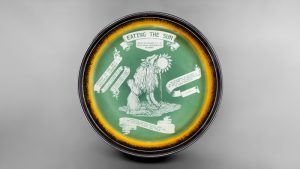Foto/Industria in Bologna is, according to its organisers, the only photo biennial in the world devoted to industry and work. I found no reason to disagree with them. The focus of this year’s edition is the technosphere: the ecosystem of technology humans have layered over the Earth to ensure their dominion over it. It is so vast that a 2016 study from the University of Leicester Department of Geology estimated the weight of its physical structure at 30 trillion tons, a mass of more than 50 kilos for every square metre of the planet’s surface.
The biennial sounded like yet another good excuse to take a train to Bologna. Which i did. Last Thursday. I’ll write about the biennial in the coming days but right now i’d like to spend the afternoon writing about an exhibition that suggests that the technosphere has started to invade our bodies. Even though me might not always realise it.
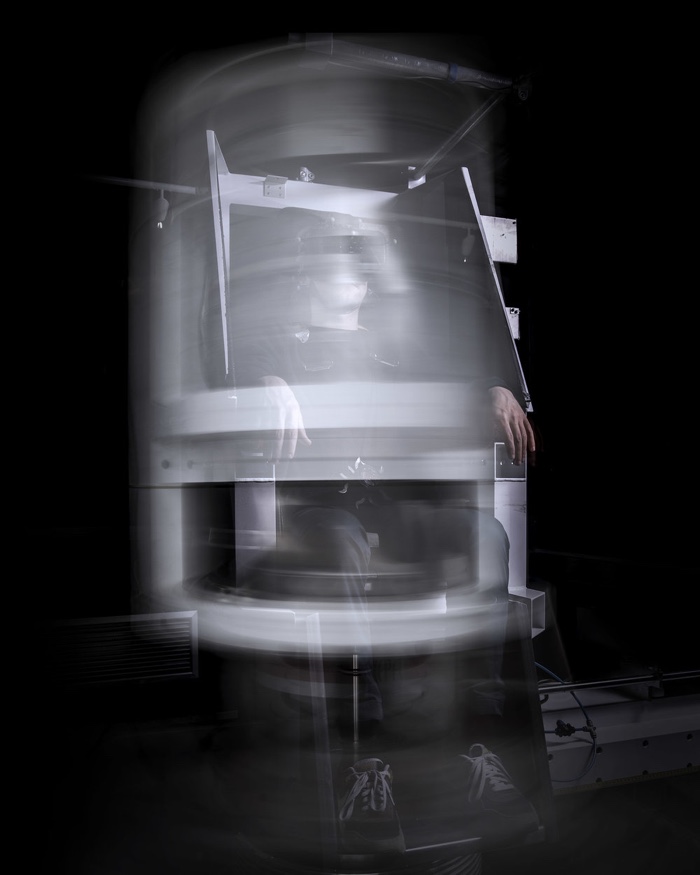
Matthieu Gafsou, H+
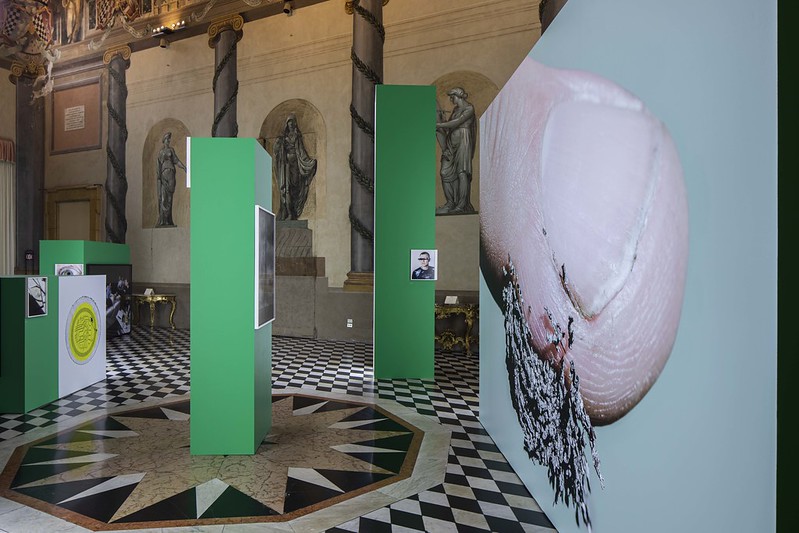
Matthieu Gafsou, H+. Exhibition view at Palazzo Pepoli Campogrande. Photo: Foto/Industria
Matthieu Gafsou has spent 4 years researching transhumanism, a movement looking towards science and technology to drastically improve human cognitive, mental and physical performances. The project saw him travel the world to visit research labs, cryo-preservation facilities and meet the advocates of transhumanism and the “everyday” people whose sheer survival depends on technology.
His H+ (the abbreviation of transhumanism) series suggests that each of us is a bit of a transhumanist. Smartphones might not be embedded inside our bodies but we’re grown dependent on them. Most of us can’t imagine functioning in society without these “memory prostheses.” They have given us new powers. And stolen a few we used to have (the ability to find our way in a new city or remember friends and family’s numbers.)
H+ includes contact lenses, “superfood” bars, LED light anti-ageing face masks, orthodontic braces, pacemakers and vitamins in the panoply of the unsuspecting transhumanist. They now seem very common and prosaic. Self-implanted magnet to feel magnetic fields and nootropics, however, unquestionably slide into transhumanist territory. You don’t depend on them to be alive or healthy.
And how disturbing is -to some of us- the cryopreservation of patients? Or the quest for immortality? The exoskeleton “capable of turning a soldier into a nearly inexhaustible war machine”? Some of these go far beyond the limits of medicine, they “optimise” us, they suggest that each of us is a mass of flawed cells and functions, a machine perfectible ad infinitum.
In the exhibition, each photo, each illustration of a humanity struggling to shed its perfectible forms and mortal limits is given the same treatment. There’s no hierarchy. Some images are explained. Others are not. It’s up to you to connect the dots and decide what is “normal” and what constitutes (now) a presumptuous pursuit to sidestep the limits our human condition.
Below are some of the images of the H+ series with comments by the photographer. I’ll let you meditate on them while i’ll hunt my book shelves for a battered copy of Seneca’s De Brevitate Vitae:
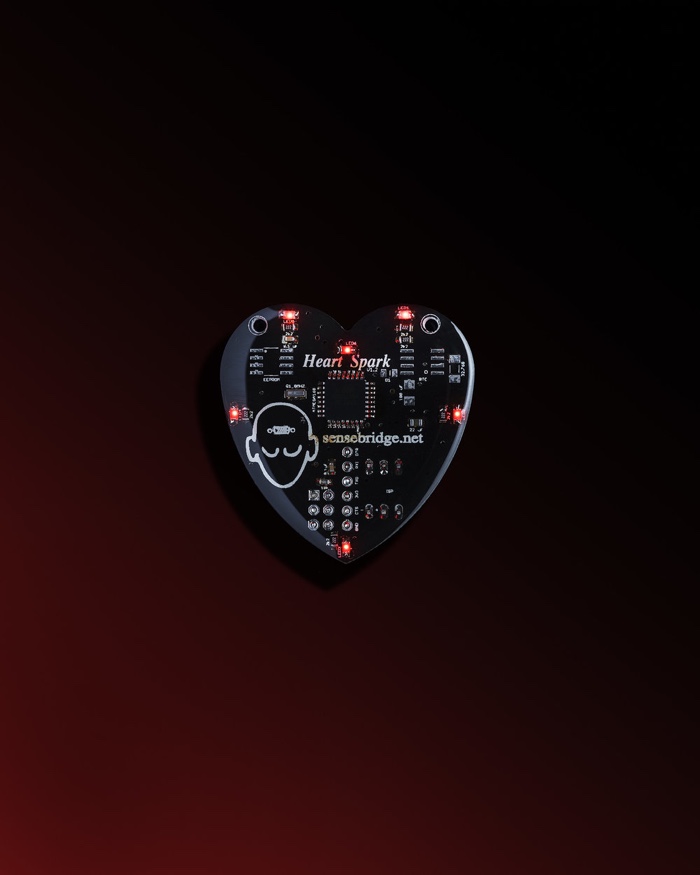
Matthieu Gafsou, H+. Some people wear necklaces that blink to the rhythm of their heartbeat. Others have had devices implanted allowing them to “feel” the North. In either case, these are demonstrative gadgets that prefigure objects with more potential. External appendages, they are outward signs of participating in a project: Their function is therefore quite superficial. They are symbols, futuristic substitutes for crosses or religious medals.
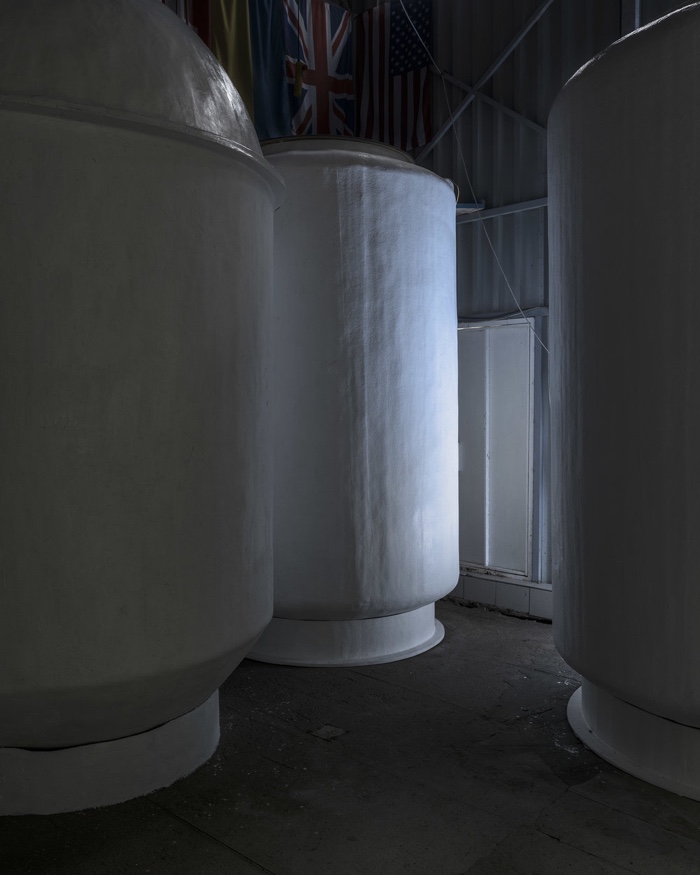
Matthieu Gafsou, H+. Kriorus’s brand new facility. The vats contain cryogenized brains and whole bodies awaiting the day when science can wake them up.
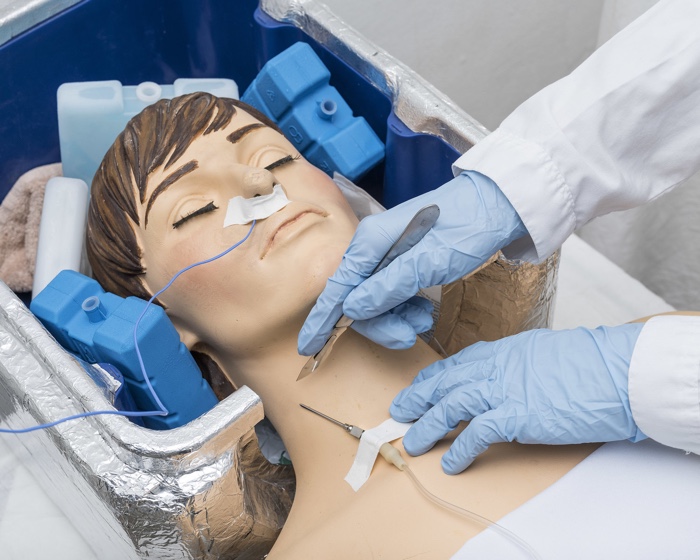
Matthieu Gafsou, H+. Kriorus not only deep-freezes corpses but also trains cryogenization devotees in how to prepare them. The body fluids are drained; otherwise, deep-freezing would break the tissues’ cells, making a future reawakening less likely. Lost in the distant countryside of Moscow, the depot is the hub of their activities.
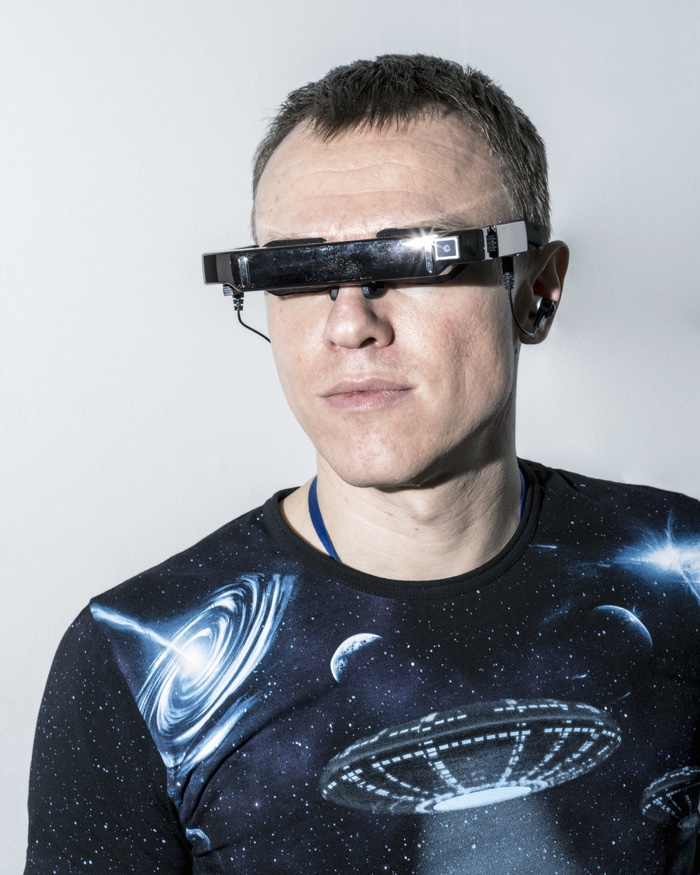
Matthieu Gafsou, H+. Businessman Igor Trapeznikov, a member of Russia’s transhumanist movement, wears several handmade experimental implants, including a device that turns sights into sounds, which could prove useful for blind or vision-impaired people. His also has various handmade microchip implants that replace his credit card and house keys, for example. Moscow, June 21, 2017
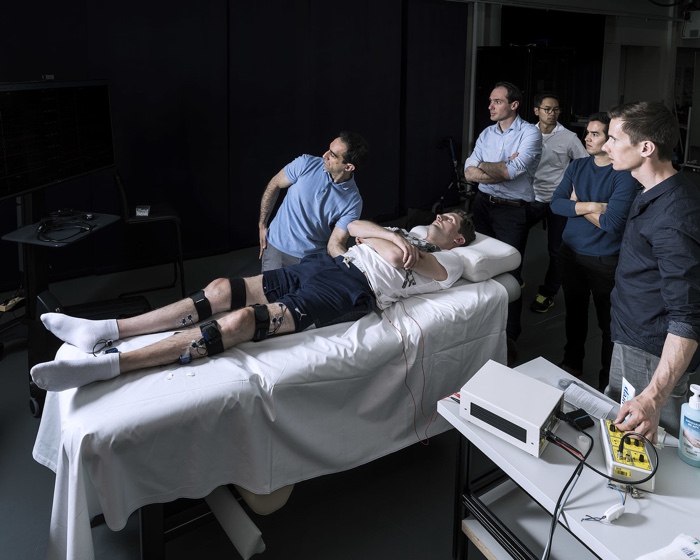
Matthieu Gafsou, H+. STIMO (Epidural Electrical Simulation with Robot-assisted Rehabilitation in Patients with Spinal Cord Injury) is a clinical study aiming to improve the motor skills of people with injured or diseased spinal cords, who have major difficulties controlling their lower limbs. It is the extension of the reWalk experiment. The study required the participation of neuroscientists, engineers, robot scientists, physicians, and physical therapists. The first human patients received this type of implant in 2017
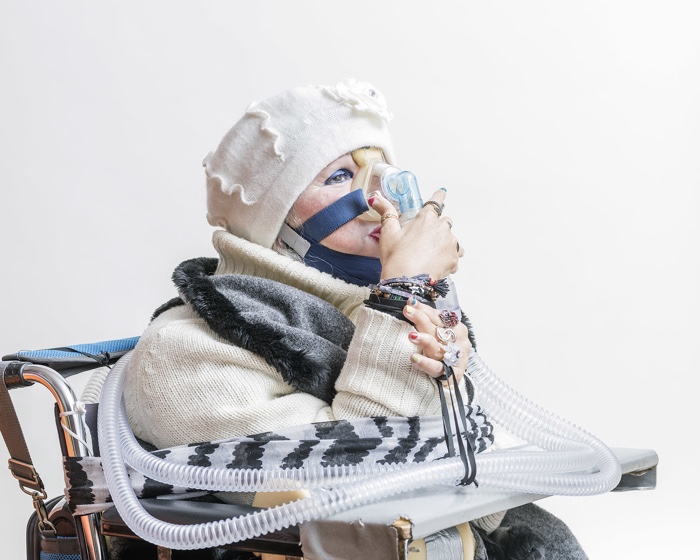
Matthieu Gafsou, H+. Marie-Claude Baillif has suffered from myopathy since adolescence. Without her respirator, she would have died thirty years ago. Her website features eloquent articles about her special relationship to technology: “My survival depends on microprocessors and electronic cards”; “Electricity is a matter of life or death for me”; “I love my phlegm aspirator”; “A little battery is magical; it transforms my life.” Technological devices keep her alive.
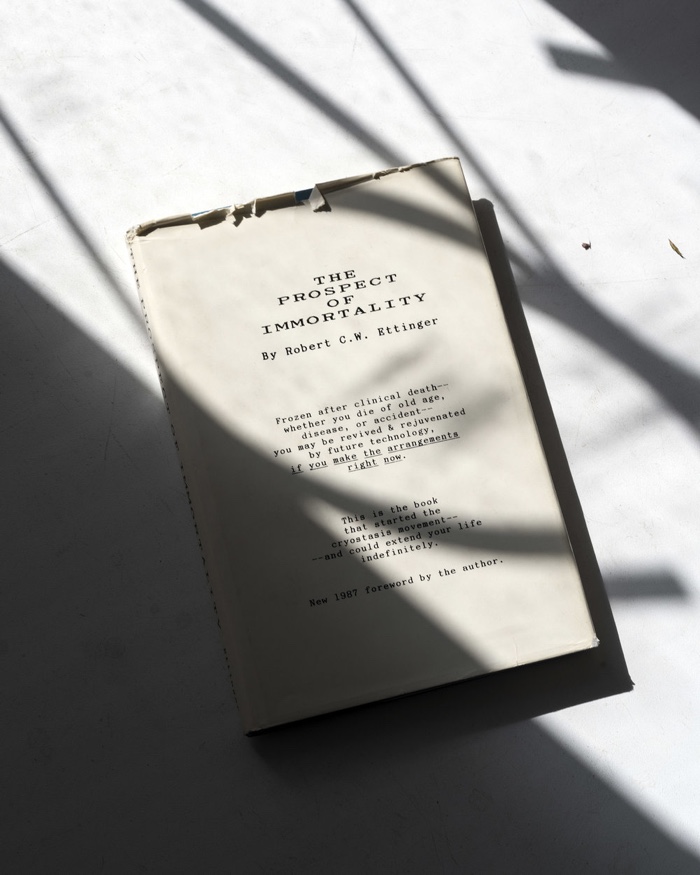
Matthieu Gafsou, H+. American professor Robert Wilson Chester Ettinger, a transhumanist trailblazer, wrote The Prospect of Immortality, the bible of believers in immortality and a sort of cryogenics guidebook. He thinks “natural man” is deficient: Cryonics is the key to unlocking and making the most of his full potential.
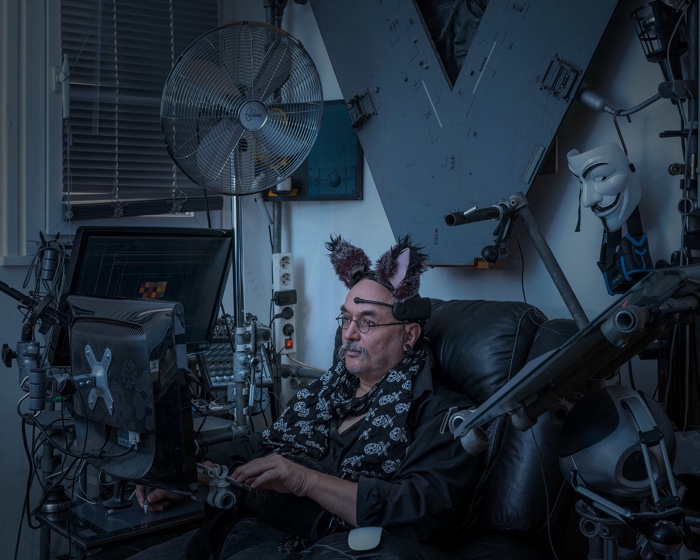
Matthieu Gafsou, H+. Yann Minh, born 1957, is a protean artist specializing in cyberculture and persistent worlds. Here he is seen in his “Nooscaphe.” He often describes himself as a “nooconteur” (a cyberspace raconteur) or a cyberpunk exploring cyberspace and the noosphere (the sphere of human reflection and, by extension, the Internet, which connects humanity through artworks, thought, etc.). He has won several awards for his creations in the areas of contemporary art and cyberculture. His futuristic, transhumanistic world mixes eroticism and science fiction. Paris, June 16, 2016
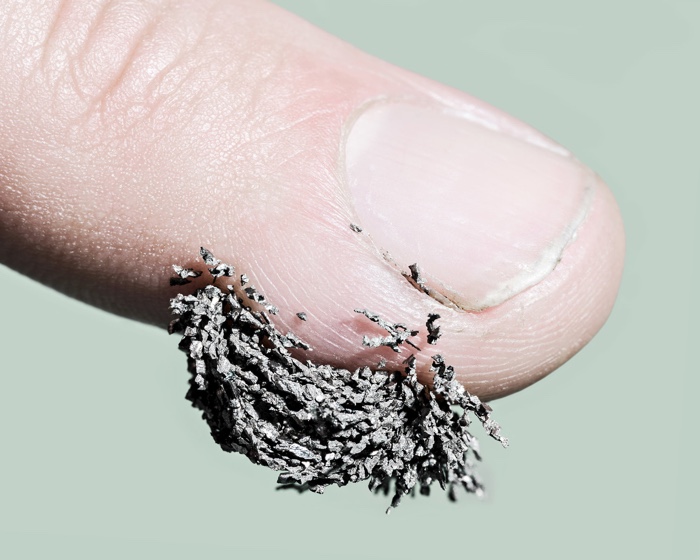
Matthieu Gafsou, H+. Julien Deceroi self-implanted a magnet into his middle finger. He says it works like a new sense, allowing him to feel magnetic fields, including their amplitude or modulations. He also wears microchips. He is the only grinder I met in Switzerland. (Grinders are biohackers who demand total freedom for their bodies, which they enhance by operating on them themselves, often in extreme conditions)
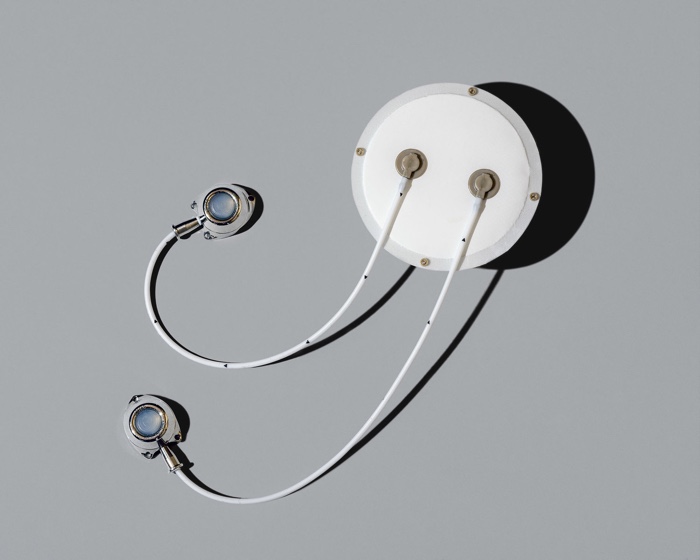
Matthieu Gafsou, H+. For years, Defymed has been working on this prototype of an artificial pancreas, Mailpan, which could revolutionize the lives of diabetics. Mailpan is an implant filled with stem cells that can secrete insulin. The technological challenge is twofold: manufacturing a membrane capable of releasing oxygen and insulin while remaining impervious to the immune system when it attacks the stem cells; and finding cells that will manufacture insulin in an optimal way. When a syringe is inserted every three to six months, two ports placed under the skin allow the stem cells that have become inactive to be removed and replaced by new ones.
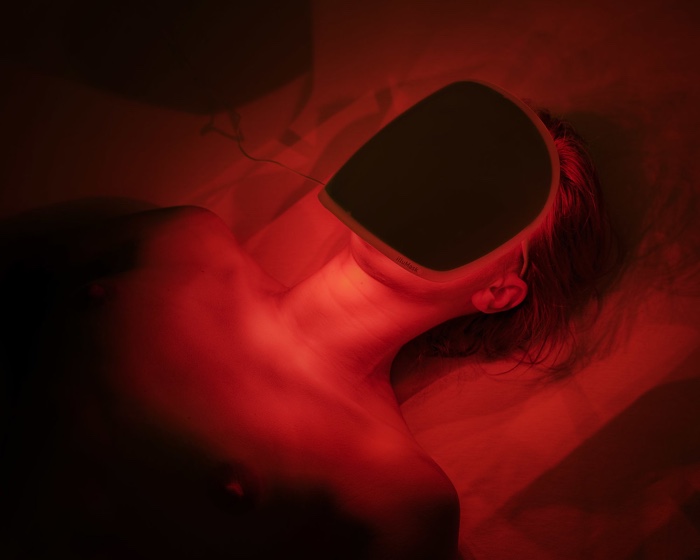
Matthieu Gafsou, H+. This anti-aging light therapy mask supposedly makes whoever wears it every day for five minutes look younger. The sales pitch borrows from medical discourse, even though it is a beauty product like anti-aging cream. What makes the device symptomatic is its participation in the already dominant ideology of the perfect body while adding the cult of technology as a way to save it from decrepitude. It is a geeky, cheap, non-invasive version of plastic surgery
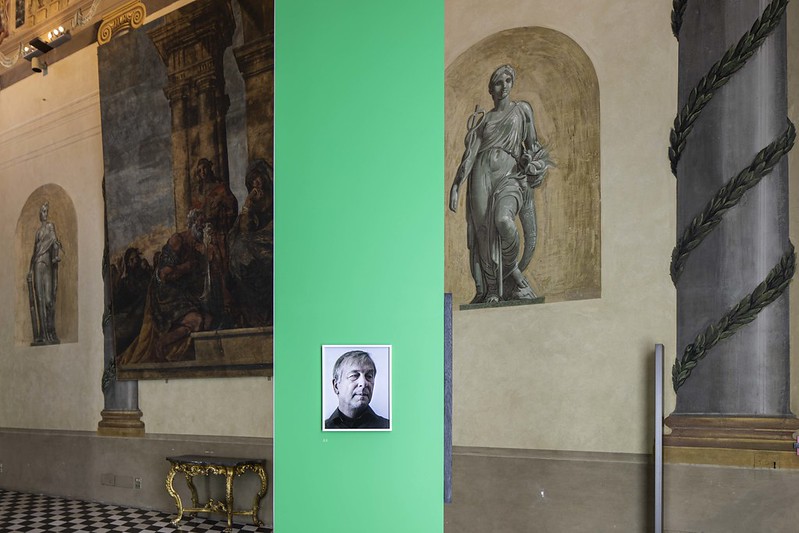
Matthieu Gafsou, H+. Exhibition view at Palazzo Pepoli Campogrande. Photo: Foto/Industria
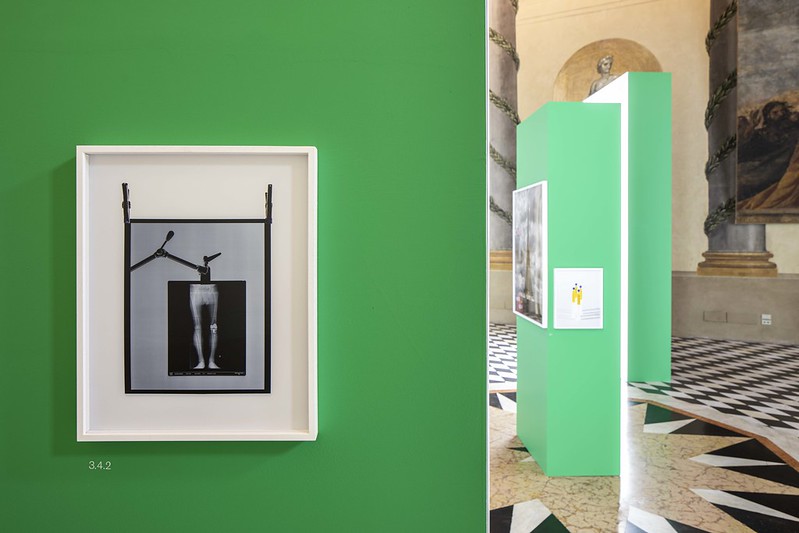
Matthieu Gafsou, H+. Exhibition view at Palazzo Pepoli Campogrande. Photo: Foto/Industria
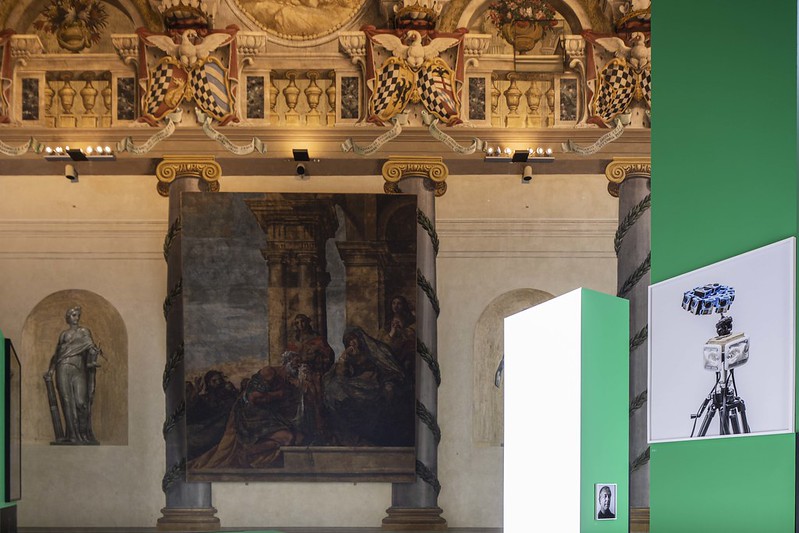
Matthieu Gafsou, H+. Exhibition view at Palazzo Pepoli Campogrande. Photo: Foto/Industria

Matthieu Gafsou, H+. Exhibition view at Palazzo Pepoli Campogrande. Photo: Foto/Industria
Foto/Industria, the IVth Biennial of Photography on Industry and Work remains open until 24 November 2019 in 10 different palazzi and other interesting venues across Bologna, as well as at the MAST (Arts Manufacturing, Experimentation and Technology) Foundation, the engine behind this cultural project.




